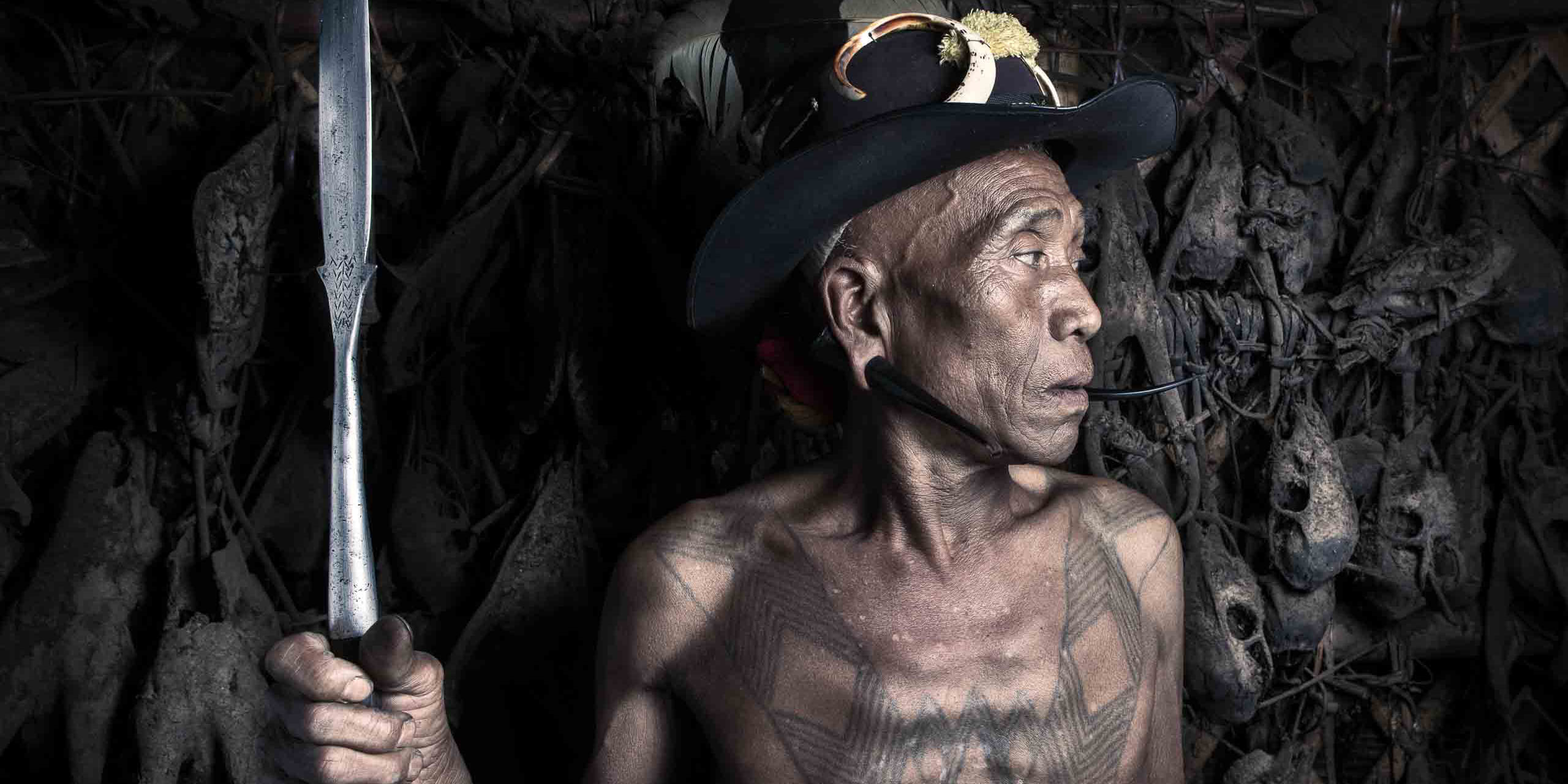Nagaland Talk: The Last Of The Tattooed Headhunters
23rd August 2018
Introducing Nagaland with a population of less than 2 million. Tucked away in the Northeast of India, surrounded by mountains and bordering Myanmar, this truly is a rarely visited destination. Nagaland’s largest tribal community are the Konyak, who were known for their practice of head hunting. They believed that human skulls possessed a life force that could ensure the prosperity of crops, animals, and tribal clans.
The evening will include a short video showing the natural beauty of India's remote Nagaland province, an in-depth talk from our special guest Phejin Konyak and a Q&A session. You will also have the opportunity to meet the Travel The Unknown India experts to discuss travel options in this wonderful and culturally rich region.
During the event there will be time to enjoy some traditional Indian snacks and some complimentary drinks.

Phejin Konyak, granddaughter of tattooed headhunter and warrior Ahon Konyak, is retracing her grandfathers and great-grandfathers footsteps by documenting the tattooing culture of her own tribe. Ahon was a respected warrior throughout the tribe and he had a wish for more peaceful times. Phejin’s curiosity and appreciation of her great grandfather's story gives her the drive to document her culture and travel to the villages and step on those hills and valleys where he had been nearly a hundred years ago.

The Konyak tribe, once notorious for their headhunting and famous for their facial tattoos, live in the remote North East India and the northwestern tip of Myanmar. The prominent and iconic “specs” facial tattoo of the Konyak men is a depiction of this unique cultural practice that distinguish the Konyaks to the rest of the world. Various other tattoo design patterns on the bodies of both men and women are a direct visual representation of this unique traditional practice. Unfortunately, the living proof today, of this once thriving and unique tattooing culture, is fading by the year.
THE TATTOO CULTURE
For centuries these lands were isolated because of fearsome headhunting practices. The tattooing art of the body is fundamentally nested in the Konyak culture and strongly related with headhunting. The greatest honour was to become a warrior and get the facial tattoo for which bringing back a decapitated head was required. But the tattooing culture went much further then that alone. For the men, tattooing was a rite of passage from boyhood to manhood to becoming a warrior, going to war was a part of growing up. For the women, tattooing reflects the cycle of life where crucial life events were reflected by tattoos on the body.

THE TRADITION OF TATTOOING DEFINES THE KONYAK PEOPLE AND THEIR CULTURE
The Konyak tribe is known as the “face – tattoo tribe” to the outside world. Tattooing started as a form of adornment to beautify and ornament the body. Tattoos for the Konyak people was like wearing a uniform with distinguished designs that distinguished between members of a particular group, village, clan or individual as a means of identification. It displayed the distinction between a warrior and a common man, a person of aristocratic clan from other clans, an unmarried girl from a woman who is betrothed, etc. It was an event to celebrate the cycle of life of the coming of age or the transition from childhood to pubescence and adulthood, accompanied by rituals and ceremonies.
Location: Kensington Central Library
Date: 23rd August 2018
Start: 17:45
Finish: 19:45
Price: £12
